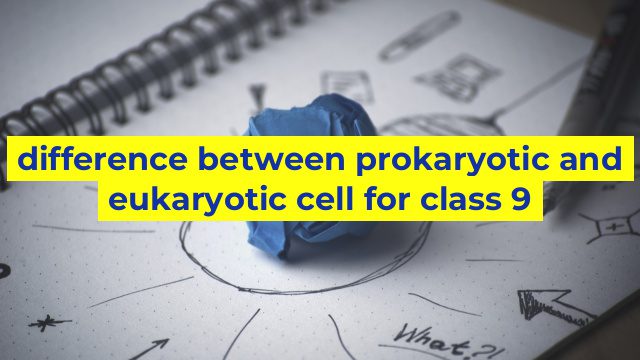Understanding the Difference between Prokaryotic and Eukaryotic Cells
Cells are the basic units of life, and they come in two distinct forms – prokaryotic and eukaryotic cells. Prokaryotic cells are single cells, while eukaryotic cells are much larger and more complex, containing multiple organelles within their structures. Let’s take a closer look at the fundamental differences between prokaryotic and eukaryotic cells in this article.
Prokaryotic Cells
Prokaryotic cells are smaller in size and less complex than eukaryotic cells. They lack an organized nucleus and other membrane-bound organelles. Instead, they have a single circular DNA molecule and a few other smaller circular DNA molecules known as plasmids. This means that every metabolic process and genetic information exists within the cytoplasm.
Another crucial difference between prokaryotic and eukaryotic cells is their external structure. Prokaryotic cells have a cell wall consisting of peptidoglycan. Some also have capsules or flagella, which help in locomotion.
The simplest example of a prokaryotic cell is the bacterium.
Eukaryotic Cells
Eukaryotic cells, on the other hand, are more extensive, more complex, and contain many organelles within the cells. These organelles are specialized structures that allow cells to perform specific functions. Examples of organelles include mitochondria, ribosomes, and endoplasmic reticulum.
The most significant difference between eukaryotic and prokaryotic cells is the presence of a nucleus. The nucleus is a distinct, membrane-bound organelle that houses the cells’ DNA. DNA exists as linear chromosomes, which are organized inside the nucleus, making replication and gene expression much more organized.
Most eukaryotic cells possess a cytoskeleton consisting of microtubules and microfilaments, which serves to create a scaffold-like structure that holds the cell’s contents in place. Eukaryotic cells are found in organisms such as plants, animals, fungi, and protists.
Conclusion
Prokaryotic and eukaryotic cells are fundamentally different from each other in the way they’re structured and how they operate. Prokaryotic cells are simpler in structure and lack membrane-bound organelles, while eukaryotic cells are larger and contain many organelles, including a nucleus. Understanding the differences between these two cell types is crucial for understanding basic biology and the many organisms that make up the world around us.
Table difference between prokaryotic and eukaryotic cell for class 9
| Feature | Prokaryotic Cell | Eukaryotic Cell |
|---|---|---|
| Nucleus | Absent | Present |
| Size | Small (1-10 um) | Large (10-100 um) |
| Membrane-bound organelles | Absent | Present |
| Cell wall | Present (in most) | Present (in some) |
| Cytoplasm | Fluid-filled | Fluid-filled |
| Ribosomes | Present | Present |
| Genetic material | Circular DNA | Linear DNA |
| Reproduction | Asexual (binary fission) | Asexual and sexual (mitosis/meiosis) |

